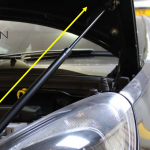Is Indian car market really cost sensitive? Debunking the myth with the latest data
For many years, tags like ‘price sensitive’, ‘cost driven’, ‘mileage minded’ were reserved for Indian consumers and Indian car market. Launching an entry level, high mileage, low cost car was looked up as a secret sauce to succeed in the Indian market and many automakers tried luring the customer with this recipe. Today, the Indian Automotive market is the 4th largest automotive market in the world, filled with all the global carmakers. Over the past few years, things have changed quite a lot. The connection of Indian market and Indian consumers with the above mentioned tags has almost disappeared. Cheap, compact, economic are no longer the words that define Indian consumer.
Automakers have already started taking a note of this. If we closely study the strategies of automakers, market success stories and data gathered by several research and consulting firms, we would realise instantly that Indian car market is in the middle of an evolution of consumer preferences.
Before we actually go through the data and its interpretation, let us analyse what factors are leading to this change in the consumer behaviour – from cost sensitive to aspirational.
Increasing Median Income : India has witnessed steep increase in the median income – for people working in government as well as private sector. This has resulted in more dispensable income. When we talk about Indian market, we must understand that preference for low budget and high mileage cars was not necessarily out of lack of aspiration; often, it was out of lack of resources to do justice to these aspirations. The increase in the income has enabled Indian buyers to actually pursue their aspirations. Over the last one decade, the GDP of India increased by a whooping 60%. The chart below highlights this consistent increase in the per capita GDP of India[1]
According to JD Power India Sales Satisfaction Survey 2019, cost of vehicles/EMIs and availability to finance dropped down by 4% over the previous year. This clearly highlights that lack of finance is fast losing it importance as a deciding factor in the vehicle sales.
Increasing Number of Young Buyers : Globally, young buyers are more willing to explore new brands, and are also willing to pay a premium for additional features. The number of young buyers in India is increasing and this dividend is expected to last for next 15 years or so. This makes India an ideal place to sell feature loaded automotive. As per an interview statement by Audi India head in 2019, 41% of their sales came from millennials who are in the age bracket of 22-37 and most of the sales come from age bracket of 31-40[2].
Increasing vehicle usage : As per a study conducted by Deloitte, as of 2019, Indians purchase a new vehicle after completing a stipulated number of kilometres. With present vehicle usage, this happens at an interval of 6.3 years. On account of increasing usage of vehicles for work as well as personal purposes, within five years, this duration is expected to come down to 5.6 years. The same study also reveals that a large number of buyers switch, particularly to upgrade to a newer technology or a larger vehicle.
With this background, let us now take a look at what kind of consumer behaviour shifts are taking in the Indian car market.
Increasing preferences to interior and exterior vehicle styling : JD Power 2019 India Sales Satisfaction Index noted that buyers are placing more emphasis (up 9 percentage points from 2018) on vehicle styling, both exterior and interior, when deciding on a model. Many brands, which were averse to refine internal and external design aspects of their vehicles are now uplifting the designs of their existing and new product lines.
Consumer preference changing from compact to large :
A study by YouGov, which was released at ET India EV Conclave 2020 states that 46% of millennials are willing to buy an SUV within next one year. 34% have shown preference for sedans whereas only 10% were interested in buying a hatchback. This data reveals a major shift in the consumer preferences. If one looks at the study of Maruti Suzuki sales data conducted by Mint, almost one thirds of the buyers of its compact SUV, Brezza, are first time buyers. This highlights the aspirational behaviour of the Indian buyers. This trend can be observed in the sales volumes of other compact SUVs like Creta and Venue by Hyundai or Nexon by Tata Motors and is expected to continue. Going forward, one would see compact SUVs becoming the most preferred choice for first-time buyers.
The Kia Sonet, a new launch, recently experienced over 6,500 pre-bookings on the first day as it hosts a range of premium and connected features even with a price tag, higher than it’s competitors.
Consumers prefer connected cars :
As per a report released by Deloitte, Two out of three respondents in India are willing to spend up to ₹50,000 for connected technologies in cars, with a growing interest for these vehicles, as it provides customised experience as well as generates efficiency. India is one of the few countries where willingness to pay for advanced technologies is fairly promising, according to Deloitte’s Global Automotive Customer Research for 2020. According to a Deloitte Global Automotive Consumer Study, ‘Consumers in India are embracing the idea of vehicle connectivity at more than twice the rate than consumers in Germany.’
“The need for being connected is a lot more now than what it had been in the past. The era of a chauffeur-driven car will be a thing of the past,” said a Deloitte spokesperson. The pandemic, according to the company, is also set to bring behavioural changes with regard to the way one would like to get one’s car serviced.
Automotive sector’s next evolution is likely to be hinged on digitalisation in the wake of restricted public transport and growing demand for personal mobility, said this report on connected cars and OEM outlook.
All the major Indian as well as foreign automakers are already working towards providing connected features in the vehicles. For instance, Maruti Suzuki, India’s largest automobile company announced ‘Suzuki Connect’, a new telematics solution system for its Nexa range of premium category cars. Based on a proprietary telematics control unit, Suzuki Connect is an advanced integrated safety and connected car solution, designed to provide customers with improved safety, security and a user-friendly connected car experience, including vehicle tracking, emergency assistance, vehicle live location/movement status, service due reminders and driving behaviour analysis. Earlier this year, in association with Kerala State Women’s Development Corporation, Maruti Suzuki also launched “She-Taxi” service, with web-based convergent technologies that monitor and track activities of both passengers and cab drivers – all an extension and part of telematics for making taxi services safer for women.
Preference to Electric Vehicles :
Migration to EV is expected to be faster than the projections, especially in India. Castrol took the response of over 1,000 consumers, fleet managers and industry specialists across India this year as part of a survey of nearly 10,000 people across eight of the world’s most important EV markets[3]. As per this research, buyers in India are keen to do the switch to EVs earlier than those in other markets. Although consumers in India are seeking a lower price point than consumers in other countries, they are also willing to accept a slightly longer charge time and a slightly shorter range.
As per the report, on an average, consumers in India said they would consider purchasing an EV by 2022. This is two years earlier than the global average of 2024. However, two thirds (67 per cent) of consumers in India said they are adopting a “wait and see” approach. Over 40 per cent of fleet managers said they are waiting for competitors to make the switch before they do.
The data compiled above busts the myth of ‘cost-sensitive and price-driven’ Indian consumer. One can very easily conclude that to consumers in India, cost is becoming a waning factor and technology, features, comfort and styling drive the buying decision. This has put India in a very interesting position, and it will be very exciting to see where we go from here.
For any comments or questions, please do write to me at sudhir.nerurkar@quanzen.com





